There is about 5-15cm of snow on various aspects at Mt Baker Ski Area. Not quite enough to really ski, however, there were some brave snowboard and ski tracks.
Yesterday, Oct 3, I drove up the Mt Baker Ski Area road to do some hiking. As I got higher it became very obvious that my low-cut hiking/running shoes wouldn’t be too suitable for the conditions. Snow was on the ground already at Heather Meadows parking lot.
Road that leads to Artist Point via Austin Pass was closed for the winter and a bit of snow covered it at the gate. By Austin Pass the coverage was just enough (5-10cm of hard snow) to skin up. Skiing would have been a bit sketchy but possible.
The weather was excelent with occasional wind gusts, but not too strong. Mostly clear skies and around 0-5 degrees Celsius.
Next few days are supposed to be sunny and fairly warm, so I think the snow will melt to ground on south aspects but may hold on on shadowy north slopes.
Here are few photos to give you an idea how it looked up there yesterday:
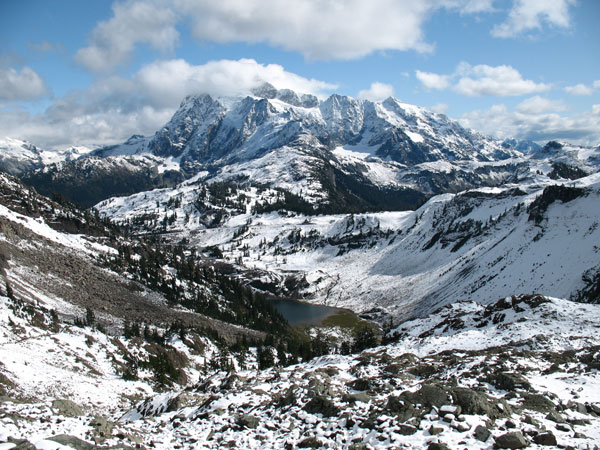
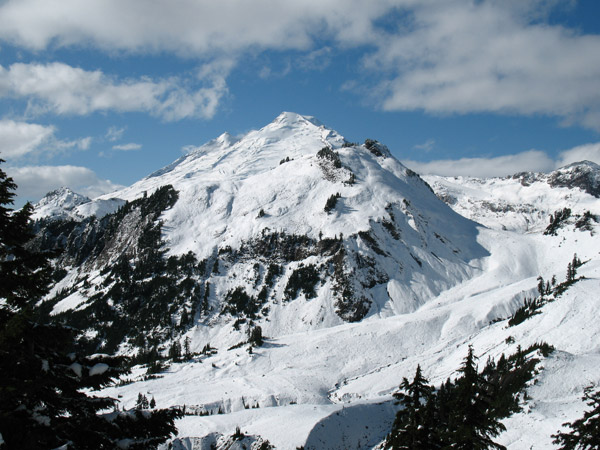
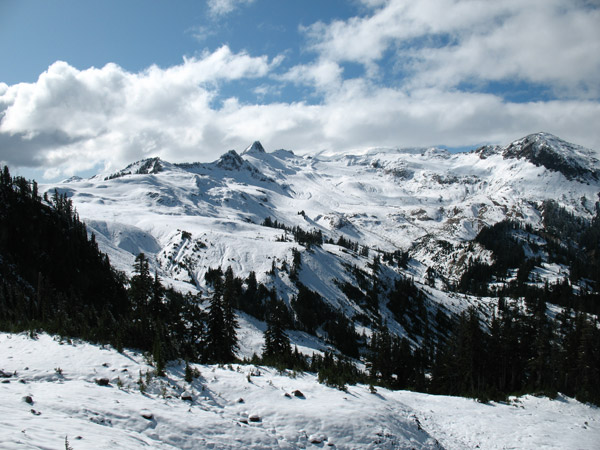
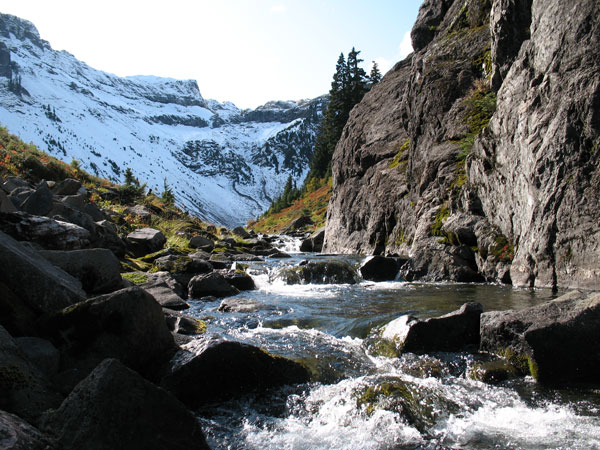
World Cup 2010 racing calendar: Canadians compete
World Cup ski mountaineering racing calendar for 2009/2010 season made it out couple of weeks ago. Highlight of the season will definitely be Ski Mountaineering World Championships 2010 in Andorra that will that place during the first week of March.
See or download the complete World Cup 2010 calendar.
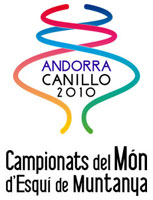 Skimo World Championships are organized every two years and 2010 racing program will be as follows:
Skimo World Championships are organized every two years and 2010 racing program will be as follows:
- Mar 2 – 3 – Individual races
- Mar 4 – Vertical race
- Mar 5 – Teams race
- Mar 6 – Relays
Another notable event on the calendar, Patrouille des Glaciers in Switzerland, is already a long time classic on the European skimo racing circuit. This three-member teams race covers 53 km and climbs 3994 m vertical. It is scheduled for April 24th, 2010.
However, Pierra Menta, one of the most prestigous skimo races, is not on the World Cup calendar this season. This four day stage race is a Tour de France of skimo racing, but the World Cup rules left organizers with a tough decision, and so they most likely didn’t even apply for a World Cup status this year. The race will take place between March 10 – 14th, 2010 in Areches Beaufort, France.
For Canada, this season is already shaping up to be the “biggest”. National team that will be sent to Andorra will most likely have at least 10 athletes compeeting in all disciplines. Some of those athletes will compete in Pierra Menta and some other World Cup events as well. More on the national team racing in a future article.
Have your say: skinning in or through ski resorts?
What do you think about skinning in or skinning through ski resorts?
This is a very hot topic among backcountry skiing community. For sure it is a bit of an oxymoron “backcountry skiers skinning in ski resorts” but there are very specific reasons why all of us do it from time to time.
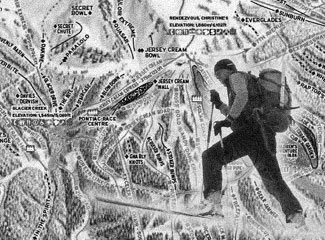 My reasons for doing it is accessibility, training and certain avalanche conditions. Some times I just want to skin through a resort to access backcountry while other times, after a storm, I would do couple of laps in a resort just to be safe.
My reasons for doing it is accessibility, training and certain avalanche conditions. Some times I just want to skin through a resort to access backcountry while other times, after a storm, I would do couple of laps in a resort just to be safe.
Main reason why ski resorts don’t like us doing it is their liability and their insurance policies.
I understand their point of view, yet I believe there is a solution; however, there is not much will (based on what I experienced couple of times) to agree on something.
(This issue seems almost non-existent in most of the European resorts and around the world. It looks like we, in North America, tend to sue too often for small things, so we are paying a price for that even on this end.)
Usual Experience
I had discussions about this issue with numerous staff members at couple of Canadian and US ski resorts. We always ended up in a “closed, unlogical” loop, example:
When you buy a ticket, by that act, you are waiving your rights to sue them for damages. (Specific conditions of such texts can be found on the back side of every ski area lift ticket.)
I am not a lawyer, but my reaction to that was that if I buy a ticket, thus waiving my rights and satisfying their liabilities, I should be OK to skin up. The answer is NO. That has to with their “ski area rules”. (I bet, those can have wide interpretation.)
So my next suggestion was that if a more complex document (like a season permit to skin up at specific times, on specific runs) is crafted I would be willing to pay for it every season and sign it. The answer was NO.
Again, not being a lawyer, my next reaction was: “Whether it is more safe to have weed-smoking-chimneys take a break at the most invisible spots (for downhill traffic) than a very experienced person to skin up by the ropes of the ski area boundaries?” There was no definite answer on that. More or less they were leaning towards YES, but they hesitated to say so in a clear way.
No disrespect to anyone smoking anything, I just couldn’t come up with a better example at that moment; I was cold and furious. 😉
Since I know my stand on this topic, I would like to know what do you think:
What do you think is a fair solution for both parties to address this issue?
Should we be allowed to skin up at all?
Can we do laps when avalanche ratings in the area are high or extreme?
Should we be allowed to skin up only to access backcountry?
Should we pay for it?
You can take a stab, in the comments below, at all of these questions or just one, or even come up with your own. I believe, we are all very interested to see what each of us thinks.
Interview with Andrew McLean – Icon of North American ski mountaineering
Andrew McLean is one of the icons of North American ski mountaineering, however, I didn’t know this until I met him couple of years ago at a ski mountaineering race. He won the event, and I believe it was the first time I got to see the Scarpa F1s racing boots in person, he wore them. Right the next day I researched him online and found him very interesting.
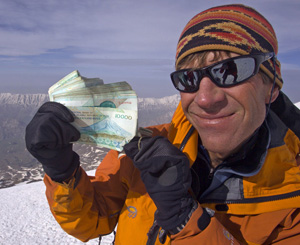
Andrew specializes in steep skiing in remote locations and has first descents on all continents to his credit. Some of the more exotic places he has skied at include Baffin Island, Antarctica, Iran and Morocco. Andrew’s current stomping grounds are Wasatch Mountains in Utah. You can following him through his blog at StraightChuter.com.
And here is more from Andrew in an interview about his relationship with ski mountaineering:
Q: How and when did you become involved in backcountry skiing and ski mountaineering?
I grew up skiing all the time as my mom was a ski instructor. This eventually led to racing and I was very involved with the junior program at our local hill, Alpental, which is about an hour outside of Seattle, WA. Alpental has a lot of steep terrain and easy access backcountry, so that kind of became “normal” skiing for me – steep slopes with funky conditions.
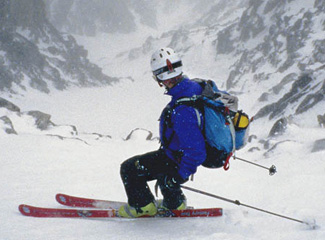 After High School, a friend turned me onto rock climbing and I spent a lot of my summers doing that, then when it snowed I went to the resorts.
After High School, a friend turned me onto rock climbing and I spent a lot of my summers doing that, then when it snowed I went to the resorts.
Years later, when I started working at Black Diamond Equipment, I met Alex Lowe and he turned me on to the idea of combining the two sports. I had always thought backcountry skiing was more like shuffling around on the flats, but Alex opened my eyes to the idea that you could find and ski way burlier stuff in the backcountry than you could ever find at a resort.
For the first few years I still did some resort skiing, but after I got my backcountry systems figured out, I started doing more and more of it, to the point that that is all I do nowadays.
Q: What keeps you still going strong from one adventure to another, what’s your motivation? And what do you like the most about backcountry skiing?
As far as adventures or expeditions go, skiing is a great way to visit new places, meet people and see different cultures. I love the aspect of going somewhere new and taking a chance on the skiing – a lot of times it is so-so, but when you find some killer new spot, it’s like hitting the jackpot.
I’m also into the idea of skiing projects, like going to all seven continents, skiing ten classics on ten consecutive days, skiing a group of three related peaks, etc.. It is like having bunches of little collections.
I think, the thing I like most about backcountry skiing is that it is a complex sport with so many different aspects to it, like skinning, route finding, avalanche safety, pacing, knowing when/where to go and the actual skiing itself. I first got into it just for the skiing, but now I really enjoy the entire package.
Q: You are a father now. (How) did that change your approach to skiing? Are you more careful?
I’d say I’m more careful now, not so much because I’m a father but more because I’ve seen so many talented and careful people have accidents or die while skiing. I’m also focusing more on skiing in cool places nowadays instead of just trying to find the steepest possible line.
As much as I love steep skiing, it takes perfect conditions to ski really steep slopes and you can burn up a lot of time, effort and energy by traveling around and hoping to hit it.
Another factor that comes from experience is that I think I am more selective about what and when I ski things now. If it seems like there is a chance a slope could avalanche, I’m more likely to pass it up knowing that I’ve skied tons of killer powder in the past and that this is not really a once-in-a-lifetime run.
Q: You have recently skied a first decent on Mount Foraker in Alaska. How does this adventure rate among your others?

Q: How many sleeping mats/pads does one need to get a good sleep in base camps of Alaskan giants like Foraker. Hunter or Denali?
I learned the hard, cold way that it takes more than one! On our first trip to Denali, I only brought one foam pad and it was a fairly miserable experience. I currently bring two pads (one inflatable and one foam). On our last trip I used an ExPed Down Mat pad which was enough by itself as it is super thick.
Q: What is your next ski mountaineering project going be?
I’m heading down to Antarctica in November as part of Doug Stoup’s Ice Axe ski cruise. The plan is to take a cruise ship across the Drake Passage, then use it as a floating base camp to take skiing day trips out on the Antarctic peninsula. It should be fun.
Q: Who or who’s ski mountaineering projects/activities currently inspire you, or you find interesting?
I’m inspired by all aspects of skiing and love watching free-skiers rip big lines, people huck monster cliffs and reading about the amazing speed of the Euro Rando racers.
Currently, when it comes to ski mountaineering inspiration, I like the idea of mixed media where you are exploring an area mainly on skis, but perhaps adding in some kiting or PackRafting. In that regard, I think some of the trips that Joe Stock from Alaska is doing are very cool as they are remote and exploratory, but still have some good skiing in them.
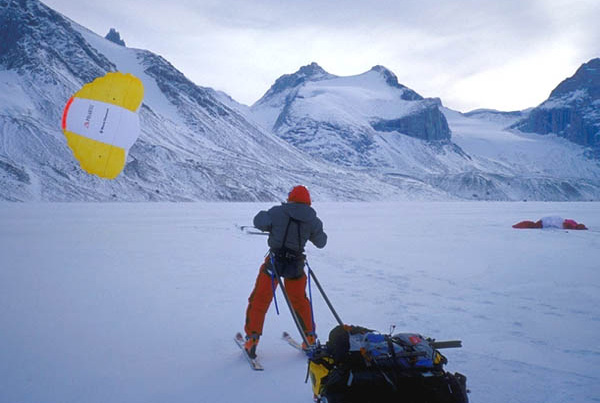
Q: In the past, you were involved in gear and equipment engineering design. Are you doing that these days too?
I’m still a designer by profession, although my skiing has gotten in the way of it. Due to my trips and new family, I’ve been working on lots of smaller projects rather than the multi-month or year long ones.
Q: Did you take part in any ski movies in your ski mountaineering career/life?
I’ve been in a few including most recently, “Steep.” Ski mountaineering is not very camera friendly as you have to haul lots of gear into the backcountry and the weather seldom cooperates. On top of that, I like skiing steep lines in remote places, which means I tend to ski very conservatively, which is exciting to do, but not necessarily watch.
Q: What do you do immediately after returning from a big trip?
When it comes to trips, I’m an organizational freak. I start packing days ahead of time, sort gear, check everything out, etc.. I also like to leave the house completely cleaned up so that when I come back, I can just dump out all the gear, clean it off and put it back. It usually takes me 2-3 days to catch up on email and phone stuff, as well as hanging out with the dogs and kids.
Q: When planning a trip/expedition, what are the most important things to do to increase the chances of achieving the objective?
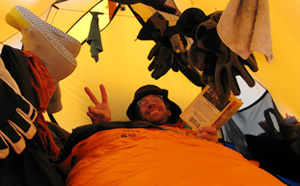
In that regard, I do a lot of careful planning. Probably the #1 thing I’ve learned is to allow plenty of time for a skiing trip as the weather and travel snafus can cut into a tight schedule.
If everything works out perfectly right from the start, then you just have some bonus ski time!
All photos in this article are from Andrew McLean’s photo collection and were taken by Andrew or his fellow trip companions.
Canadian champion wins in New Zealand
Current Canadian ski mountaineering champion, Reiner Thoni, won the Scarpa CraigieBurner skimo race in New Zealand over the past weekend.
Reiner travelled to NZ in mid-August to do some touring and racing there, and prepare for the upcoming winter.
According to a report submitted to skimo.org, Reiner won the race in a convincing fashion, by four minutes, ahead of Alexis Poilvert and Gena Sibaev.
Congrats!
Initial skimo racing calendars for 2010 season
Calendars for the North American ski mountaineering racing scene are taking shape, even though, the sun is still shining high.
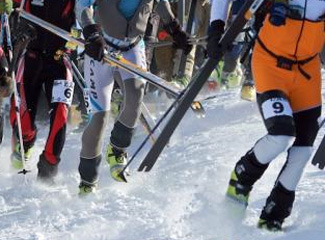
Canadian racing calendar will be getting polished within the next couple of weeks – clarifying all dates and venues.
The US calendar looks impressive already with plenty of races all over the country.
Skimo racing is clearly growing more popular every year in this part of the world, however, the act of growing won’t be finalized until we race on Hawaii 🙂
Canadian racing calendar as of Sep 8th, 2009
December
5th – Golden, BC (Tiki-Torch Dash at KHMR)
February
6th – Sunshine Village, AB (Sunshine 5000)
March
6th – Nelson, BC (ROAM Rando at WH2O)
April
3rd – Golden, BC (Dogtooth Dash at KHMR)
Late April – Whistler, BC (Ski & Snowboard Festival)
USA racing calendar as of Aug 14th, 2009
December
29th – Sugarloaf, ME (Holiday Hill Climb)
January
9th – Grand Targhee, WY
16th – Sunlight Mt., CO (The Heathen Challenge)
23rd – Whitefish Resort, MT (Whitefish Whiteout)
30th – Jay Peak, VT
30th – Crested Butte, CO (Crested Butte Rando)
30th – Bridger Bowl, MT (Skin to Win)
31st – Blue Hills, MA (Big Blue Relay Race)
February
7th – Mad River Valley, VT (Mountain Hardwear Ski Mountaineering Race)
20th – Monarch Mt.,CO (Race the Divide)
27th – Saddleback Mt., ME (Second Annual Saddleback Mountain Challenge)
March
6th – Magic Mt., VT (Magic Mt. Rando Race)
6th – Nelson, BC, Canada (Kootenay Coldsmoke Powderfest)
13th – Alta, UT (Wasatch Powder Keg)
20th – Jackson Hole, WY (USSMA National Championships)
April
10th – T.B.A., CO (COSMIC Race – two-person team event, 10,000ft. vertical)
17th – Molas Pass, CO (San Juans Rando)
24th – Arapahoe Basin, CO (Marmot Grind)
May
2nd – Mt. Bachelor, OR (King and Queen of the Cone)
Sign up for avalanche safety and backcountry travel course
This is a second article from the series on “How to start backcountry skiing and alpine touring?”.
As with anything new, we have two choices – learn it ourselves (with help from friends) or register for a course that is led by a true professional in its industry. In this case, the second option costs more money but the learning process is much faster and safer.
Recreational avalanche safety and backcountry travel courses are for novice backcountry skiers and usually take place over one or two days. Students are provided with hand-outs they can keep, and more importantly, with amazing knowledge that is lot of times gained only by experience. Therefore, make sure you sign up for a course that is certified by an appropriate organization in your country.
In Canada and United States this means various guiding companies that are certified (licensed) by the Canadian Avalanche Association or other appropriate authorities to teach these courses. Most of the companies that have mountain (and ski) guiding certifications are suitable.
The skills you will learn at such courses include:
-
recognizing avalanche terrain and danger
-
decision making
-
basic snow properties
-
basic avalanche search and rescue
-
backcountry travel in avalanche terrain based on your experience
-
and more
The Revelstoke Steamer: do you have the legs?
Within backcountry skiing community, Revelstoke is well know for its location – being a base to endless adventure opportunities during the winter months. But being summer now, Revelstoke has something else up its sleeve.
The Revelstoke Steamer (not sure whether its an official name) is a brutal bike hill climb done as an individual time trial up the road to the summit of Mount Revelstoke.
The climb is 27km long and gains about 1600m vertically! Those are impressive numbers that easily compare this climb to any giant passes that are featured in Tour de France.
So, if you want to get your ski legs tested before the first snow falls then make sure to check out the event’s website and sign up.
The race itself will be held on September 13th, 2009. In person, you can find out more information at the Flowt Bikes and Skis store in Revelstoke.
North Joffre Creek mini-traverse: Spring skiing and bush whacking
This trip took place in Duffey Lake area in the southern part of Coast Mountains, Canada, during May 23-25, 2009. Duffey Lake backcountry skiing is a serious rival destination to the famed Rogers Pass near Revelstoke, BC.
A detailed description of the North Joffre Creek traverse can be found in John Baldwin’s book – Exploring the Coast Mountains On Skis.
Day 1 – bush whacking
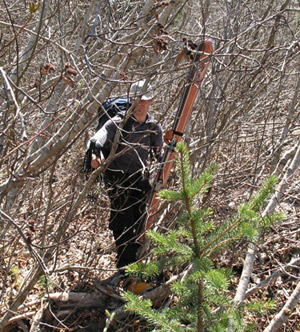
Since spring conditions are one of the best to explore new terrain, due to high snowpack stability, stable weather and long days, we decided to go out on for three days.
Two of us, Stano Faban and Peter Mrazik, headed up the Duffey Lake road on Saturday morning. We parked our car on a logging road (km 3) on the east side of the North Joffre Creek, since this was the spot where we would finish the trip.
The late date and warm days just before our trip prepared quite a bush whacking for us. Avoiding swaps, which are skied over in the winter, by crossing the creek and the valley higher up meant dry boots but very thick bushes. We couldn’t carry the skis on our packs since we weren’t able to move a step forward with such a setup.

From here we headed directly west towards a wide pass (more of a ridge) between Cassiope and Saxifrage Mountain. The lake was in melting conditions, so we opted to stay on its north side by climbing up about 50m higher onto some mellower terrain.
After reaching the wide pass we decided to go little further towards Saxifrage and pitch a tent there to be ready for some morning spring skiing.

Day 2 – ski time
Early morning plans were slightly disrupted by our vacation moods. However, this turned out to work in our favour as the east face of Saxifrage was in prime conditions at around 8.30am.
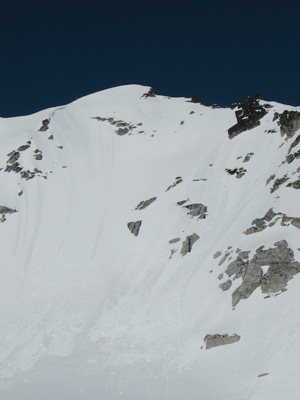
Skiing down the east face is getting steeper (around 40-45 degrees) but in those conditions it was perfect. This was a summit and a face that I was eying for some time since it looks quite attractive from Cayoosh Mountain where I go often. Cayoosh is just few valleys to the east from here.
After getting down we packed our gear and headed north through another fairly wide col immediately east of Saxifrage. From here, skiing down to White Lakes was great. Although, on couple of spots right off the top, the snow was bullet proof, it eased to spring corn very soon.
Once crossing the White Lakes we stopped and turned around. The valley looked spectacular and sure worthwhile to stick around for some skiing. We’ll come back in the future.

After good laughs and some more skinning we cooked our dinner on a shoulder that is south of Cirque Peak. We relaxed, talked, laughed and ate in an amazing calmness of the surrounding mountains with no society craziness in sight.
Joffre naming “controversy”
When reaching the Joffre Glacier we realized a funny fact. Joffre Lakes that are on the south side of the Duffey Lake road are fed water from Matier Glacier.
Being on the north side of the Duffey Lake road and standing on the Joffre Glacier we wondered how this geographical naming happened. From the map, it’s very clear that Joffre Lakes and Joffre Glacier have nothing to do with each other except their names. (If someone knows more please post a comment below.)
Day 3 – more great skiing
Since we knew all we had to do was climb around 200m and then ski down and walk to the car, we took our time. There are trips when we travel on a preplanned “schedule” but we decided to make this one a vacation style. Weather was great, jokes were flying, so why not just wander around a tent a bit more than usually.
Skiing from a small summit in the shoulder we slept on was amazing (photo below). It was around 900m run all the way to the trees where we reached NE fork of North Joffre Creek. Here, we followed some older ski tracks down the creek, then at about 1600m we started to traverse into the forest to the east of the creek.
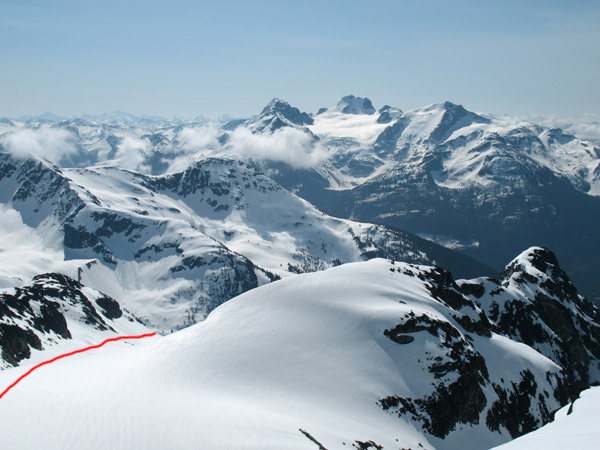
“Tree skiing” wasn’t as good but at least we didn’t have to hike yet. But soon enough, at about 1400m, we had to switch from ski mode to walking down in an old forest. We got lucky and not too long after the hike started we reached a logged patch which led us to a logging road that took us to our car.
Recommendations for this trip
After completing the route we realized that this is a perfect trip for an introduction to ski traverses and multi-day backcountry skiing. It’s not very demanding with only about 25km in length at around 2200m of climbing. The navigation is quite straight forward and the views are great.
If you want to ski more than just moving along with a big pack then there are plenty of options on various aspects at various angles.
The best time for this trip would most likely be late April since there should still be enough snow to avoid bush whacking, while the snow should be settled enough for great stability already.
Recap of the Canadian ski mountaineering racing season 2009
Canadian ski mountaineering racing series is growing bit by bit every year. The 2009 skimo racing season promised five event calendar, which meant one more than the previous year.
The new event that was added was a Dogtooth Dash at the Kicking Horse Alpine Resort in Golden, BC. And after some key sponsors pulled out of the Whistler’s race the Dogtooth Dash was announced the new venue for the Canadian National Ski Mountaineering Championships.
At the end the calendar looked like this:
- Feb 7, 2009 – Sunshine 5000 Ski Mountaineering Race – Sunshine Village, AB
- Feb 21, 2009 – ROAM Randonnee Rally – Nelson, BC
- Mar 7, 2009 – Mountain Storm – Fernie, BC
- Mar 28, 2009 – Dogtooth Dash – Golden, BC (National Champs)
Sunshine 5000 Ski Mountaineering Race
Feb 7, 2009 – Sunshine Village, AB
Blue sky and not too cold temperatures by Rocky Mountains standards made for a great opening to the new racing season. The Sunshine 5000 event is one of the “old timers” on the Canadian calendar and this year it welcomed about 60 racers on two courses. The long one was especially tough with the length of 18km and 1400m of climbing.
In the main men’s race, over the long course, two super fit Montana racers schooled the Canucks and showed how it is supposed to be done on skinny sticks. New prodigy of the US racing field, Ben Parsons, took first just ahead of Brandon French, who is American SkiMo Champ from 2008. The top three Canadians were Reiner Thoni, Stano Faban and Steve Sellers.
The women’s long course was stormed through by Julie Matteau who improves rapidly every season. Second place belonged to Kylee Toth and third to Laura Heffler. Reigning Canadian champion, Melanie Bernier, pulled out of the race in the morning due to a sickness.
Winners on the short course were Ron Worobec and Megan Dunn.
Complete results in a PDF: Sunshine 5000 – Feb 7, 2009
ROAM Randonnee Rally
Feb 21, 2009 – Nelson, BC
The second race on the calendar is traditionally a part of the Cold Smoke Powder Fest that takes place at the Whitewater Ski Resort near Nelson, BC.
The Randonnee Rally main course was a bit shorter than a usual ski mountaineering race. However, fun was everywhere mostly due to fairly tough snow conditions.
Men’s race, on the long course, was won by a German speedster, Benedikt Bohm, who posses a great deal of experience from the European racing circuit. Second and third belong to Brandon French and Ben Parsons from the States. Then the top three Canadians followed – Andrew McNab, Jeff Colvin, Alex Wigley.
The women’s category was once again dominated by Julie Matteau followed by last season’s no. 1, Melanie Bernier, and third belong to Kylee Toth. Again, the girls posted some fast times that even many men racers wouldn’t mind.
The short course winners were Daniel Klein and Jamee Beaupre.
Complete results in a PDF: ROAM Randonnee Rally – Feb 21, 2009
Mountain Storm
Mar 7, 2009 – Fernie, BC
A broken chairlift three days before the event and almost continuous snowing made for epic conditions. In the morning, the organizers almost wondered whether they should make fat skis mandatory as sinking waist deep was inevitable. Deep, deep powder was to be skied!
Big tumbles, face shots and good laughs characterized the atmosphere on the race course. The battle for the win was all the way to the line when the first four racers came in within one minute of each other. First belonged to Reiner Thoni, second to Andrew McNab, and the podium was completed by Jeff Colvin, all Canadians.
Speedy ladies had good times as well and nothing could stop another dominant performance of Julie Matteau, as she won her third race from three starts this season. Second belonged to Kylee Toth, followed by Linda Berg of Sweden.
Race over the short course was won by Matt Nerdig and Brenda Critchley.
Complete results in a PDF: Mountain Storm – Mar 7, 2009
Dogtooth Dash – Canadian Championships
Mar 28, 2009 – Golden, BC
This was the day many racers prepared for whole winter because medals were to be awarded. Despite the fact that this was the very first time the organizer put on a ski moutaineering race the course was designed perfectly and was the most technical one Canadian skimo racing scene ever saw (the same most likely applies for the whole North America).
Once the gun went off the fierce battle was on. Mid-way through the race, the field was led by a pack of four. The race leader and eventual winner, Scott Coldiron of US, was pulling slowly but surely away from three Canadians that stayed together until the very last moments. Reiner Thoni was crowned the new Canadian Champion as silver went to the revelation of the race, James Minifie, and third to Stano Faban.
The technical course with around 300m vertical of bootpacks made it a bit tough for ladies to follow since their steps are considerably shorter than those that male racers make. However, once more a fast time was set by Julie Matteau who became the new queen of Canadian skimo racing. Last year’s champion, Melanie Bernier, came second followed by Billie Velisek.
In the short course battle the fight was won by Jonah Job and Brenda Critchley.
Complete results in a PDF: Dogtooth Dash – Mar 28, 2009
Overall results – Canadian Ski Mountaineering Cup 2009
At each race, points based on finishing times were awarded to each participant, towards the overall Canadian skimo series. Three out of the best four results were calculated to establish the final national ranking.
Men’s overall series champion for the 2009 season was Brandon French of US. The top three Canadians were Reiner Thoni followed by Jeff Colvin and Andy Traslin.
In the women’s category an impressive sweep of all the races on the calendar gave Julie Matteau the overall series title. Followed by Melanie Bernier and Kylee Toth.
The season was arguably the most competitive in the history since many racers wanted to have a shot for a National Team for the next year’s World Championships.
Although, there is a considerable gap between the top ski mountaineering athletes from the United States and the Canadian ones, all the fast Canucks are determined to break the “curse” next winter. Lets see what happens in a year.

